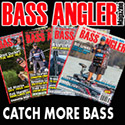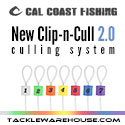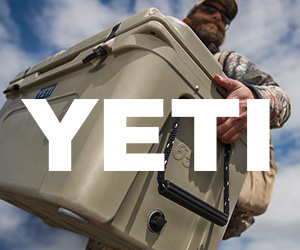 Techniques and
tips for taking a good picture of you and your big fish
(continued)
Techniques and
tips for taking a good picture of you and your big fish
(continued)

Focus: Aside from lighting, poor focusing
can ruin a picture. When taking your fish pictures, be sure to press down the
shutter release button half way, let the camera auto focus and then press the
button down fully to capture the photo. If you want to compose your subject to
the side of the frame, be sure youíre not focusing on the background. Point the
cameraís focus point at the subject first, press the shutter release button half
way down and hold it, then set your composition, and finally snap.

Team TackleTour doesn't only leave
home with the boat and tackle but also with our large array of digital cameras
to fit the job
Another tip here is that itís wonderful to capture the personís full body plus
fish along with the nice outdoor scene, but getting in close can be beneficial
too. Youíll create an image thatíll be more focused on your subject and the
details on the fish will show up better. This is especially stunning with fish
that are greater in detail and color. But when getting close, make sure your
focus is still good. Some cameras have a minimum focal distance in the standard
auto focus mode. You might have to set the camera to macro or even super-macro
mode depending on how close you are to your subject.

Taking close up shots and at
different angles as the one above can give your photo a special feel
Action shots: Big fish photos are something to treasure but action shots
also add to the bragging boards, photo galleries, and albums. Grabbing action
shots while you are fighting a fish will take some quick fingers and thinking,
and some skills from your fellow angler. In this case, you really donít have
much control over lighting but the important thing here is to make sure youíre
focusing correctly. On a sunny day the point-and-shoot digital cameras should
automatically select a larger aperture thatíll provide a greater depth of field,
thus more things are on the focus plane. So the best way is focus or even
pre-focus on the subject and snap. If the digital camera has a continuous
shooting mode, this might assist you in capturing the action of say the fish
leaping out of the water.

JIP snaps photos as Zander battles
a striper that just surfaced

Fishing in the moonlight at
Crowley Lake in the Eastern Sierras
Draw quickly! Itís tough for a fellow angler to drop his or her rod to help you
take some action shots, and if so, he or she will still need to reel in before
laying the rod down. Having the camera out on top of your tackle bag or the deck
of the boat, on the console, or in oneís pocket will surely help get those shots
quickly. Thatís another reason why having a waterproof armored point-and-shoot
like the Olympus Stylus 770SW is advantageous. The camera if left on deck should
be durable enough to handle the environmental conditions, especially in
saltwater.

The team prepares for a photo
shoot. A tripod comes in handy when there aren't enough hands around
Tripods: For anglers who fish solo, you can still take good pictures but
you will need the right camera accessories such as a tripod and a remote shutter
release. Tripods that provide flexibility at the same time as stability will
ensure a flawless capture. Here are some brands of tripods we recommend:
Manfrotto 190X, Bogen, Gitzo, Giottos, and Slik.
For the people who are on the budget, some Velbon models arenít too bad. One
camera that we use that has a very handy, wireless remote shutter release is the
Canon Powershot G6.

Big or small tripods can come in
handy. When fishing alone, a tripod and a camera remote can help you photograph
your catch of the day. Be sure to use a stable tripod on rough waters
Conclusion: Anyone can point and shoot, but not everyone can take a good
fish picture even with todayís ďdummy-proofĒ cameras. There are so many digital
cameras on the market today and choosing one isnít easy. But for anglers that
want rugged and waterproof features, this limits your selection and actually
makes picking a new digital camera easier, thatís until they start creating more
cameras for the outdoor enthusiasts. There are a few conditions that can easily
ruin a good picture, but the two most important ones are bad lighting and poor
focus. Taking good pictures isnít difficult and if you follow some of the
guidelines we mentioned in this article, youíll be well on your way. On a final
note, if you practice CPR (Catch-Photograph-Release), be sure to do it quickly
to ensure the fishís survival rate after capturing that Kodak moment with your
prized fish.

























